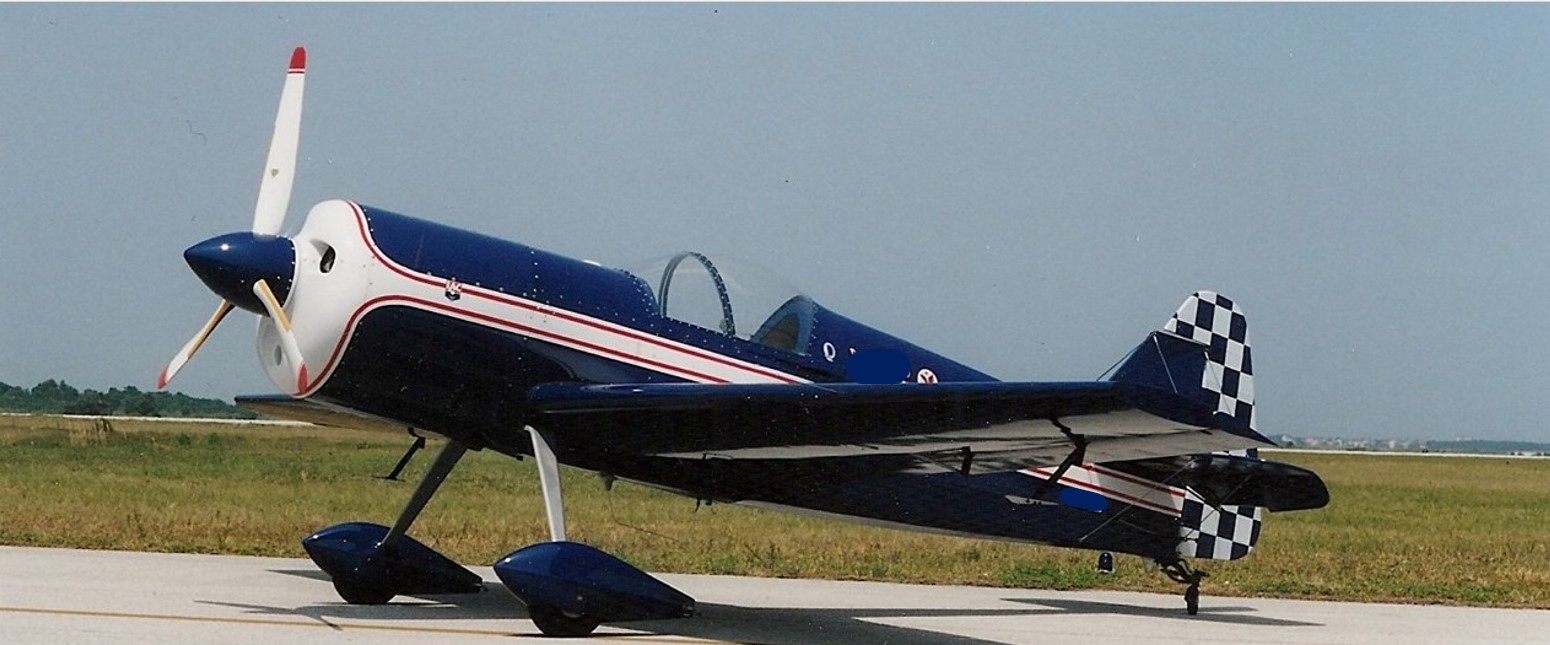
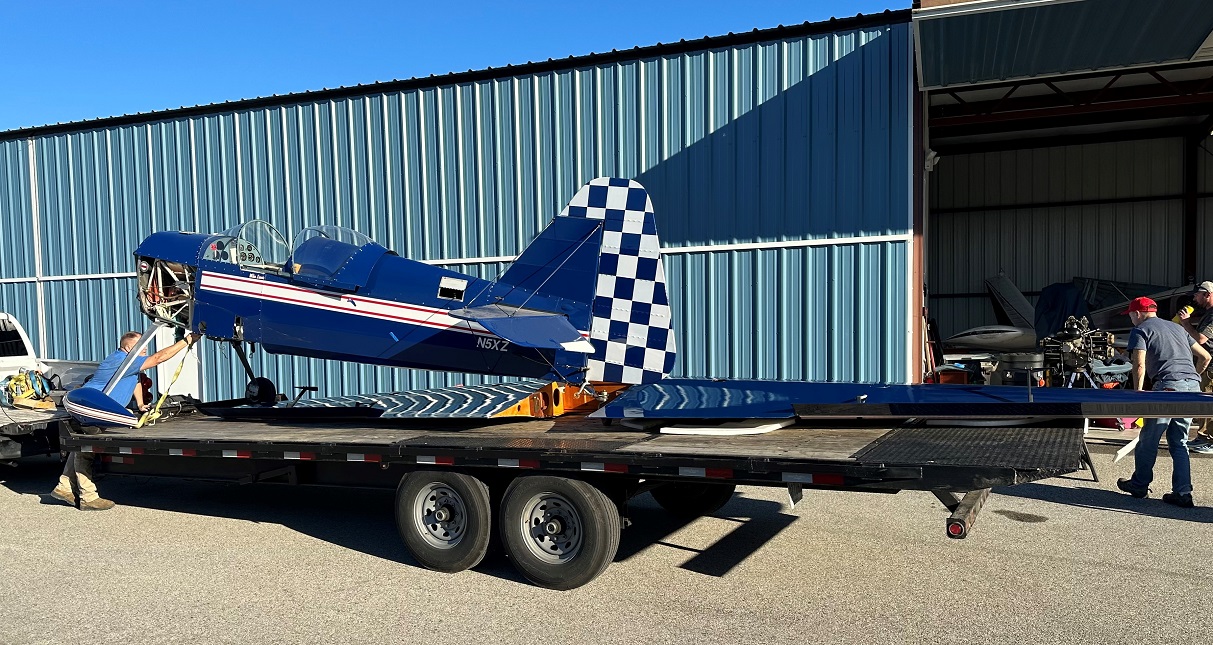
In the February issue of In the Loop, IAC member Mark Radcliff asked for some help identifying an airplane.
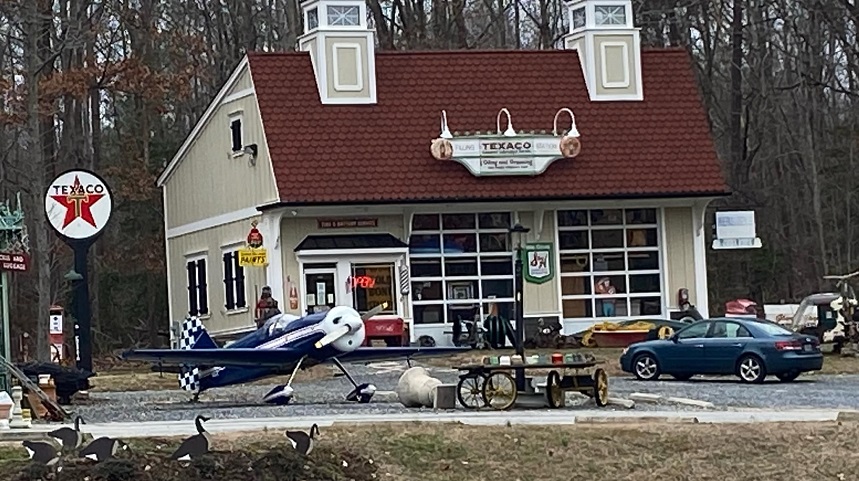
"It's called the Padden Vortex," wrote Bret. "I was based at 2W6 (St. Mary's County Airport, Maryland) for just over a decade. The plane never flew in the time I was there between 2004 and 2015. It was always tucked away in the corner of the hangar owned by Art Nalls the owner operator of the civilian Sea Harrier also based at 2W6. It started off life as the Phil Kraft Super-Fli."
"It now sits in the front yard of an antique shop in southern Maryland called Glory Days Antiques on Route 301 just before you cross the bridge into Virginia," wrote Bret who included a photo with his email.
The photo to the right shows the Padden Vortex in its new home at Glory Days Antiques. Their Facebook page indicates that the antique shop thrives on finding rare and unique things that bring you back to the time when craftsman took pride in creating quality items. They certainly found a one-of-a-kind item with the Padden Vortex!
Once we found the original builder, Ian Padden was happy to tell us a little bit more about the airplane...
History of the Padden Vortex
by, Ian Padden, IAC 4237
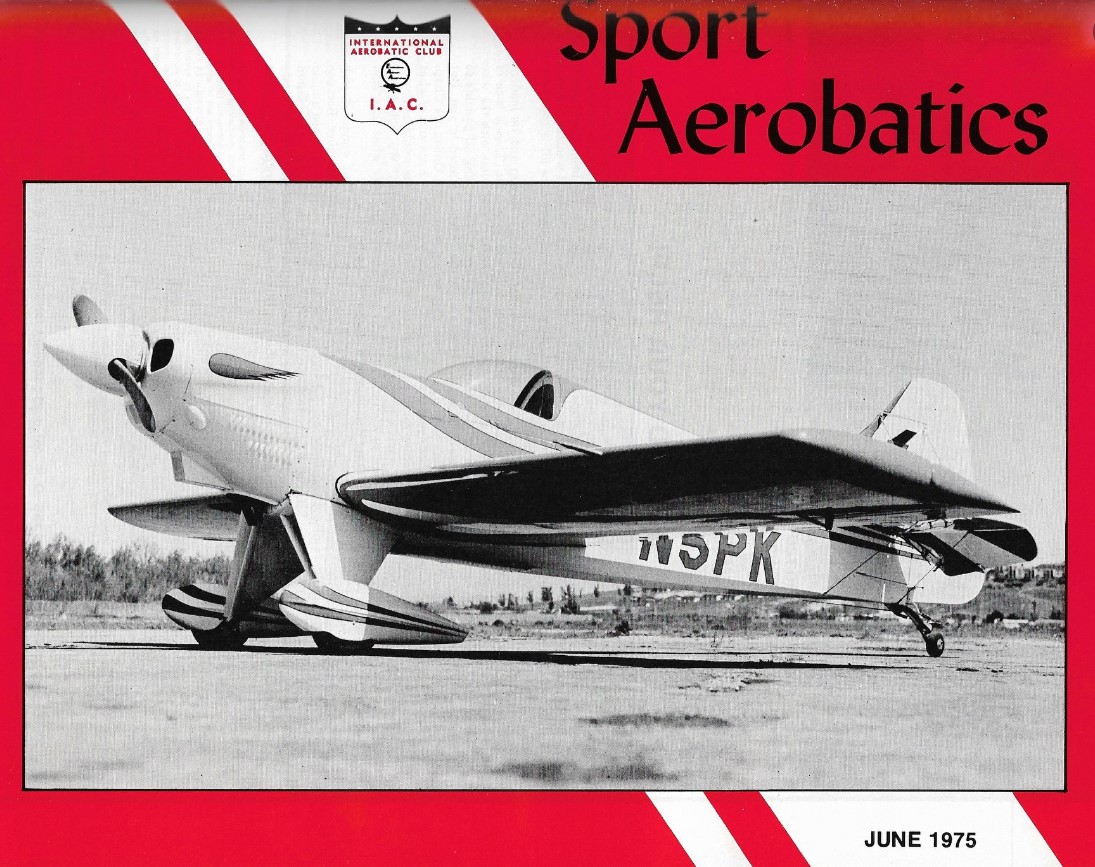
Background of the Padden-Vortex
N5XZ, the Padden-Vortex 010, began its life as the Kraft K1 ‘Super Fli’ designed by Phil Kraft of model aircraft fame. The design was based on Phil’s very successful radio-controlled (RC) model ‘Super Fli’. The aircraft was registered as N5PK and was flown by both Phil and Steve Nelson who demonstrated it extremely well for several years.
I first saw it fly at the Borrego Springs contest in Southern California and I was impressed by the image it presented for judging purposes during competition flights, despite the fact that it was underpowered and lacked the roll-rate expected for and Unlimited category competition aircraft - particularly in international competition and specifically the Fédération Aéronautique Internationale, (World Air Sports Federation - FAI) World Aerobatic Championships.
At that time, we in the USA and Western Europe were being soundly beaten by the monoplanes of the cold-war era USSR and Czechoslovakia…namely the Yakovlev, Sukhoi and Zlín variants, when we, in most of the western world, were flying biplanes, especially the Pitts S-1. There were the odd exceptions at that time, namely Leo Loudenslager in his Laser 200 monoplane – a highly modified Stephens Akro. And there was Kermit Weeks in his awesome biplane the ‘Weeks Special’ (one British pilot called it a “Pitts with afterburner”) It must be stated that the ability to fly well could not completely be attributed to just the aircraft, both Leo and Kermit were superb and extraordinary aerobatic pilots.
At the 1978 world aerobatic championships in Ceské Budejovice, Czechoslovakia, Ivan Tuček became the individual world champion flying the new Zlín 50L monoplane.
The USA team did well with Kermit finishing 4th in the Known, 3rd in the Free, 2nd in the Unknown and 2nd in the Four-minute Free. He ended up taking 2nd place overall. Leo also did well with a 1st in the Known, 2nd in the Free, and 1st in the Four-minute Free. He placed 10th overall and two years later Leo would become the World Aerobatic Champion!
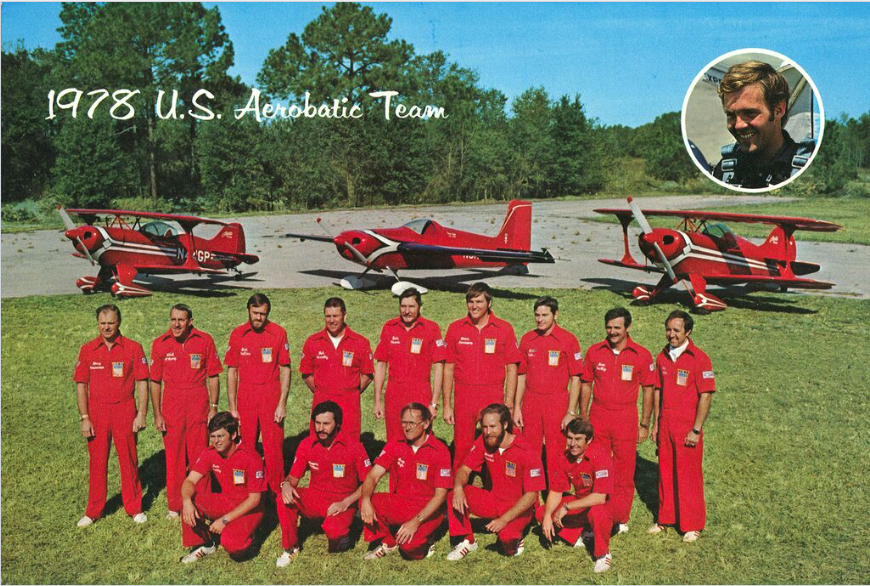
Even with these skilled pilots from America, it became obvious to most of us that unless you had a ‘Pitts with an afterburner’ and Kermit’s skill level, the days of the average biplane in international competition was finished – because, amongst other things, the judging fraternity obviously preferred the monoplane!
The birth of the unlimited aerobatic monoplane in Europe and the United States
At the conclusion of the contest (WAC) we, of the western nations, took off, formed overhead the airfield and were escorted out of Czechoslovakian air space into West Germany by a variety of military aircraft. At the invitation of the German team, we spent the night at their home airfield and sampled their hospitality. After copious amounts of Helles and Altbier, crying in it and ‘licking our wounds’, the consensus was that we needed monoplanes like Leo’s. (Note: at that time, it was not possible to buy any of the ‘Eastern Bloc’ aerobatic aircraft.)
Kermit said he was going to build a bigger biplane (the ‘Weeks Solution”); Leo said he was going to ‘tweak’ his Laser; Walter Extra, who was flying a Pitts S1 at the time, said he was going to design and build his own monoplane (EA 230 - 300 series) Patrick Paris, who was flying a Mudry Cap 20, said he would try and persuade Mudry to produce a truly ‘unlimited’ class aircraft (Cap 21; 230-232 series) and Henry Haigh said he was going to build his own (which became the ‘Super Star’ he flew to win the World Aerobatic Championships in 1988).
I decided that I was going to build my own monoplane, or rather modify an existing one, and I was thinking about ‘Super Fli’. However, I was flying a Pitts S-1S at the time and in the process of converting an S-2A into an S-2S (Lycoming 540/Gordon Price Ultimate wings with full-span ailerons, etc.) and could not take on the monoplane project – added to that was the fact that my work was taking me out of the country for months and sometimes years at a time.
‘Super Fli’ to ‘Vortex':
It was 1987 before I got back in the country and by that time ‘Super Fli’ could not even complete flying some of the Advanced level figures. Phil Kraft knew what I wanted to do, and he sold me ‘Super Fli’ on the condition that I not name it ‘Super Fli’ when I modified it. I flew it home and started work on it.
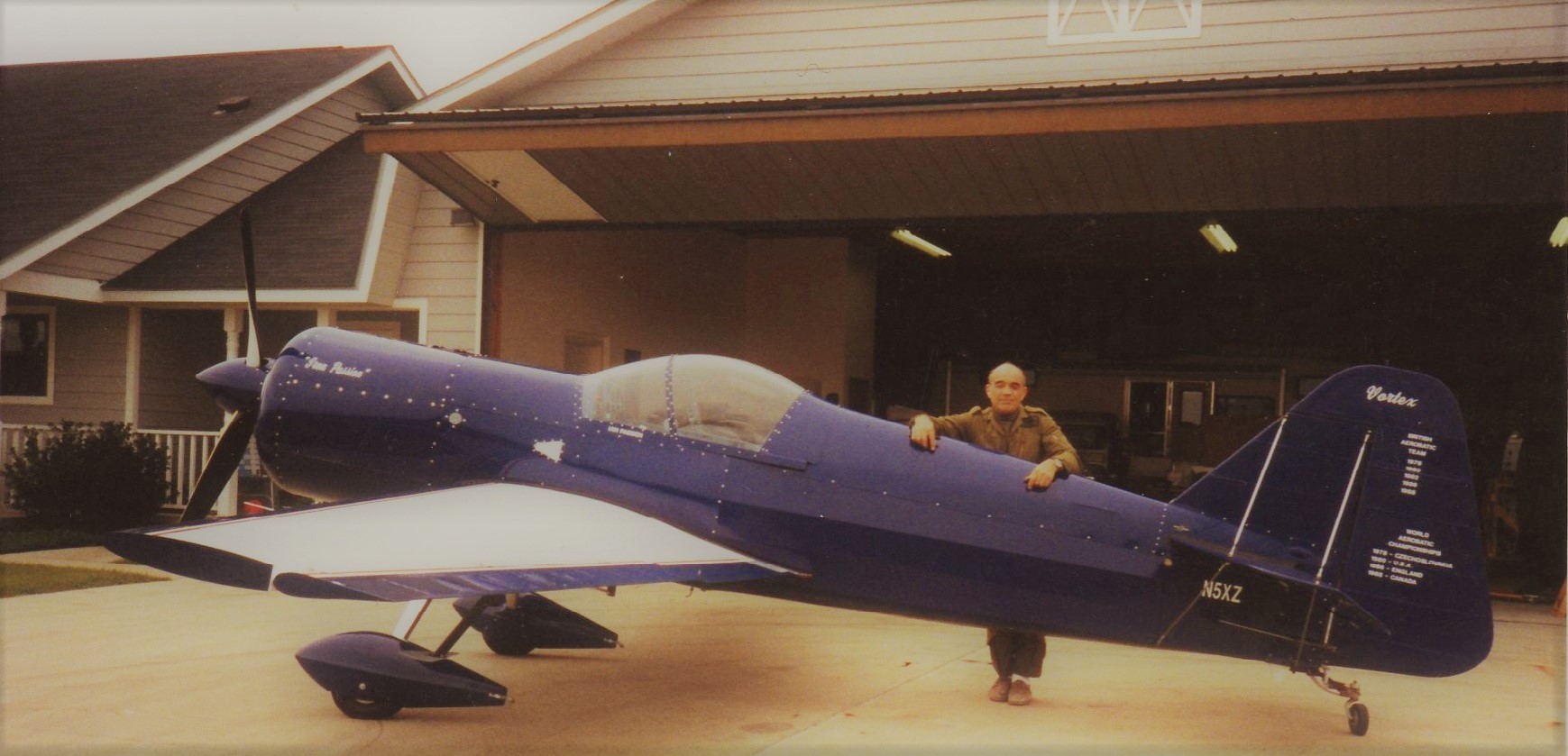
The 200 hp Lycoming AIO-360-A1D in N5PK was replaced with a Dick DeMars, Firewall Forward, modified/tuned Lycoming IO-540 engine producing some 300HP with a three-blade MT Propeller. I wanted a round-engine nose since wind tunnel testing had shown that, in conjunction with a slight coke-bottle fuselage, would give better performance and present better lines on the vertical for judging purposes. The nose bowl was formed in a mold and made with carbon fiber for strength and to keep weight down.
The landing gear was replaced with ‘spring’ aluminum and lengthened to allow clearance for the larger diameter propeller. The side-opening canopy was replaced by a fixed windshield and a rearward sliding canopy (à la Pitts). The entire wing was replaced with a Jon Staudacher built S-300 wing and the rudder was enlarged slightly.
It was a well-balanced aircraft; stalls were docile preceded by a gentle shudder, and it had no tendency to drop either wing.
Super Fli Gets Super Response
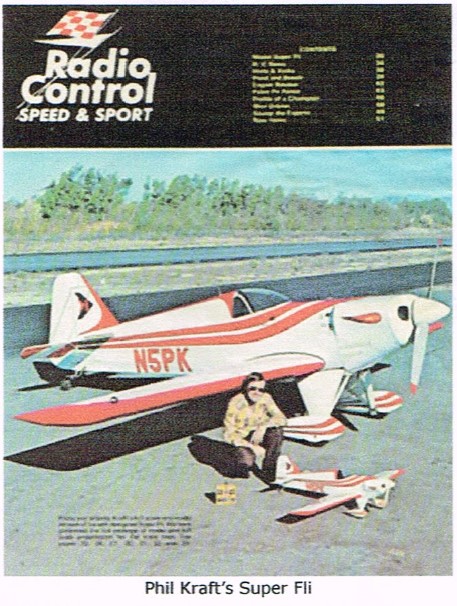

Reprinted from In the Loop, July 2010
Photos courtesy of Mark Radcliff
In the last month's editor's note, I asked readers if they could guess the airplane in the photo I posted. From the minute the newsletter was sent out, I began receiving quite a response from people. I was surprised by just how many readers knew not only the airplane but also its designer, Phil Kraft.
What's truly amazing is that the airplane may have gained more fame as a radio-controlled (R/C) model than as a full-scale design. When the airplane was introduced, Kraft was a leader in R/C model equipment, so the design was adapted for that purpose. Kraft's design also inspired others and stirred memories of the full-size version.
The photo inspired many interesting responses from modeling enthusiasts. Dan Rihn wrote: "The aircraft was designed by Phil Kraft and flown in competition and air shows by Steve Nelson, both from the San Diego, California area. A 200-hp Lycoming and fixed-pitch propeller powered it. It had a steel tube fuselage truss and wood wing. Phil was the owner of Kraft, which at the time was a world leader in radio-controlled model equipment. The design was based on his experience with aerobatic Radio-controlled models."
"Phil let me fly 'Super Fli' in the late 1980s; it was a very sweet little airplane. However, the roll rate and power-to-weight ratio was not up to the rate of the current crop of airplanes. It did handle very nice, and the lines were very nice to judge in the box," wrote Dan.
Mark Radcliff's R/C Super Fli donation to the National Model Aviation Museum in Muncie, Indiana. 2010.
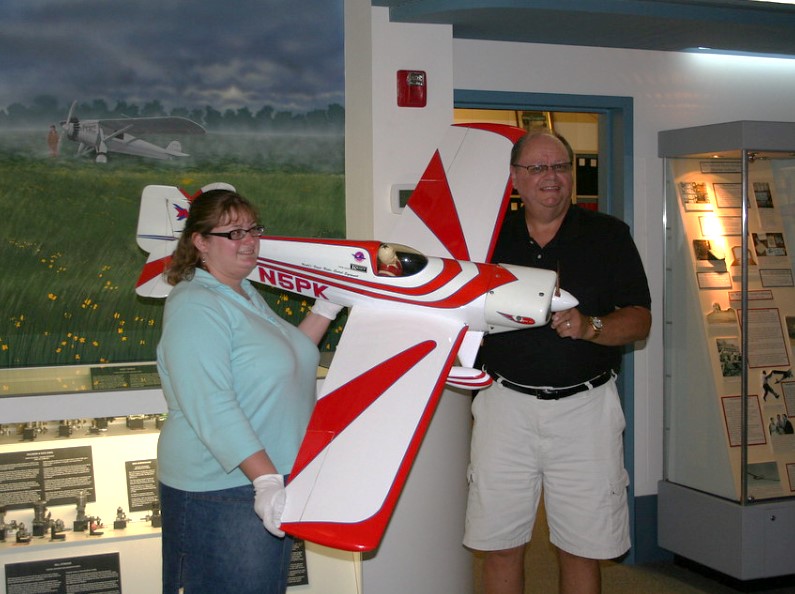
I have some history with the R/C Super Fli. I flew it in the 1978 International Tournament of Champions.
That was a big deal back in the day. The model is now in the National Model Aviation Museum in Muncie, IN.
Here is a link to a video about my RC Super Fli. https://youtu.be/NF_TVbDfYTE

